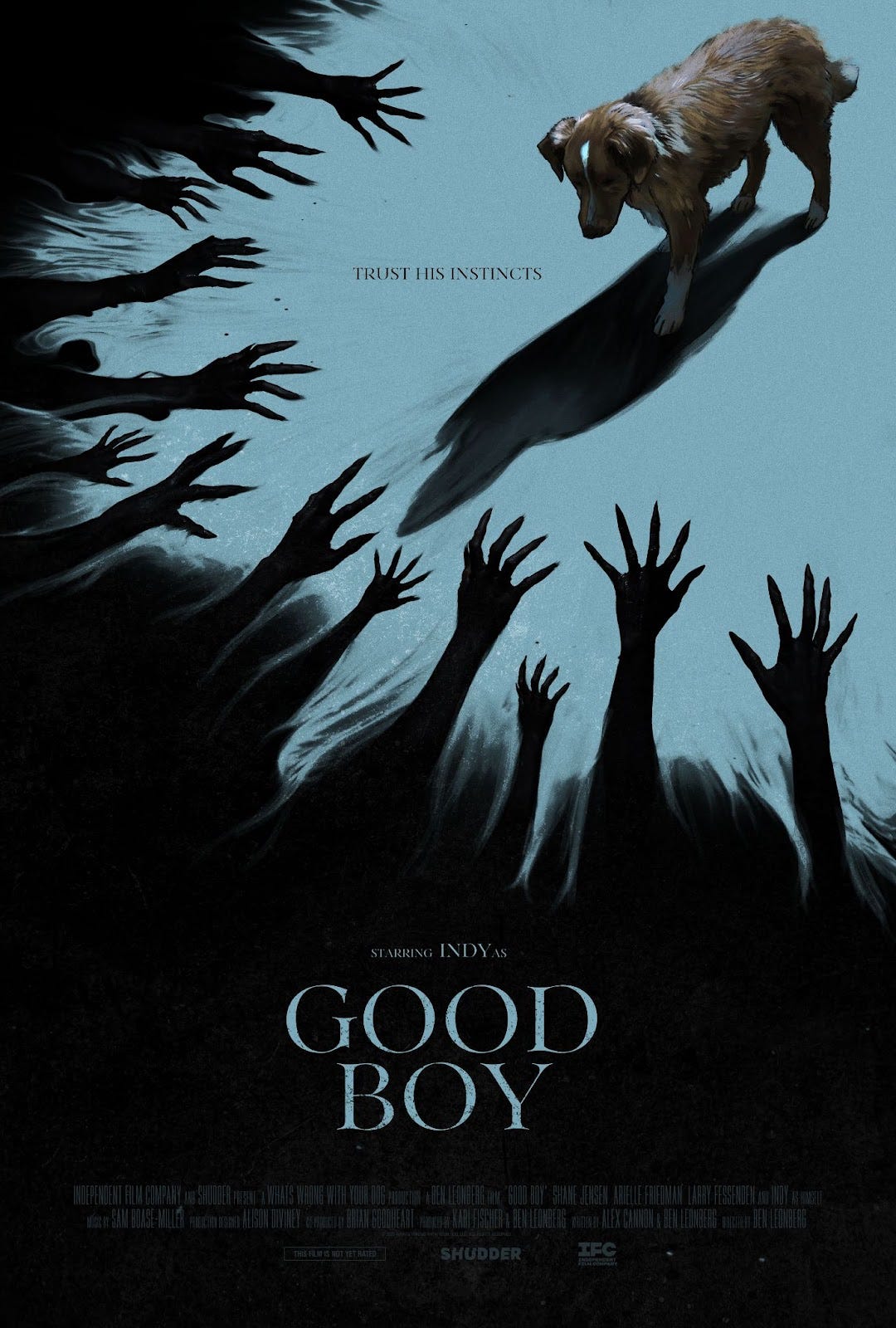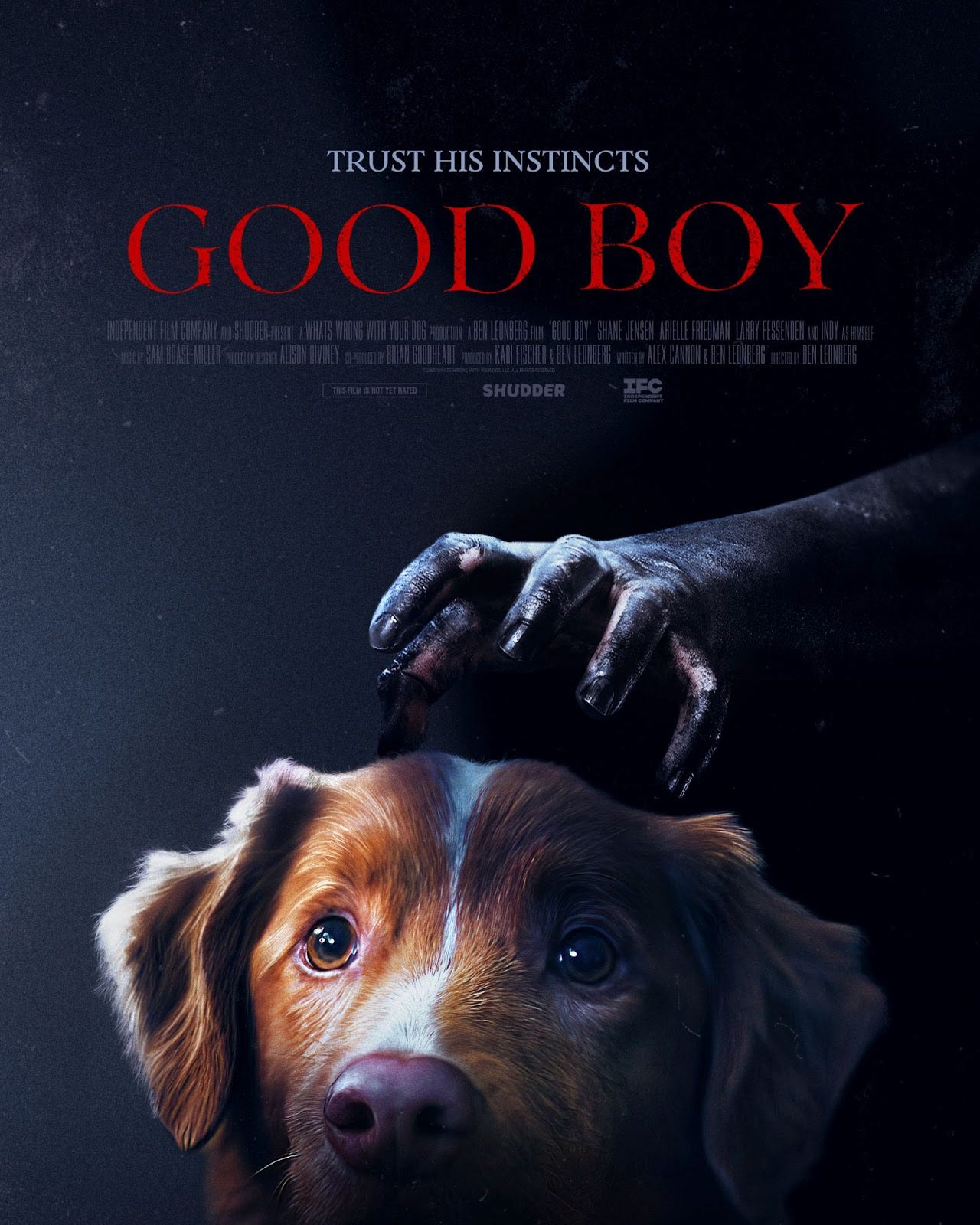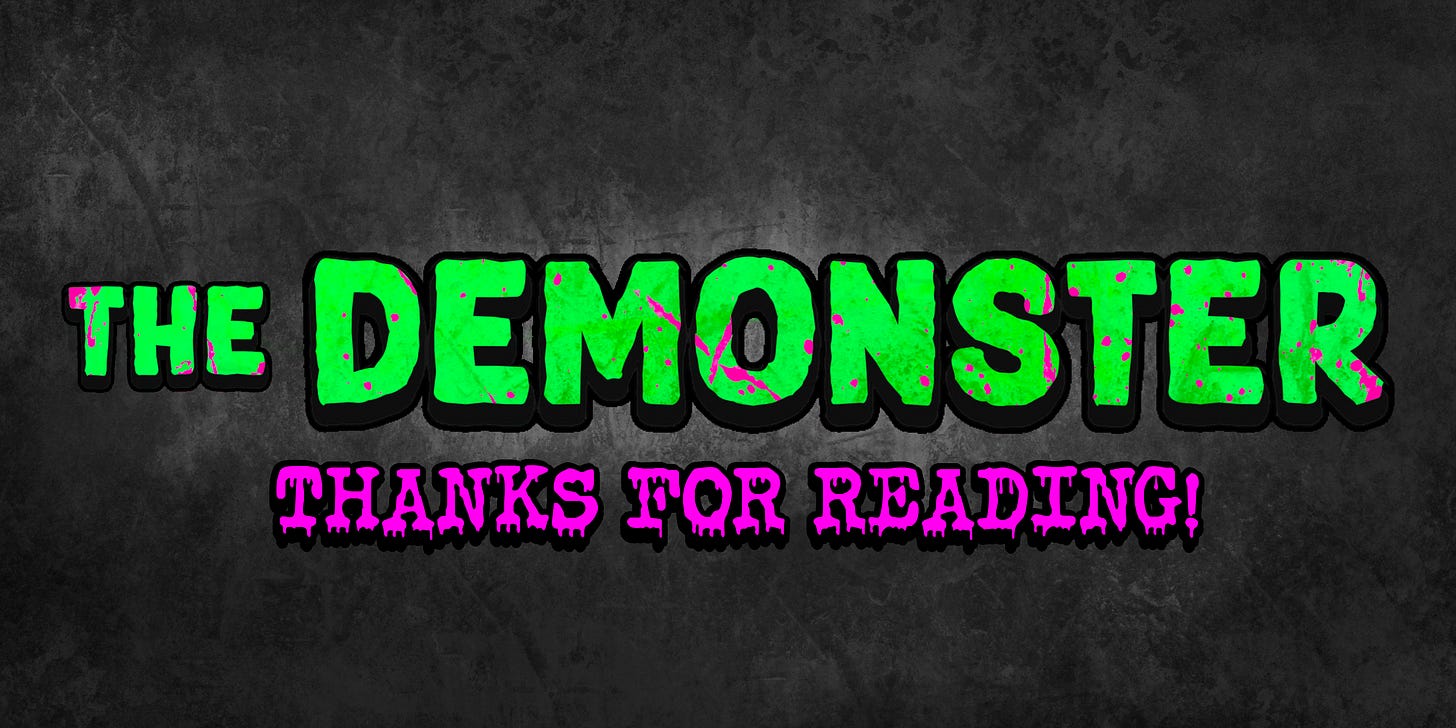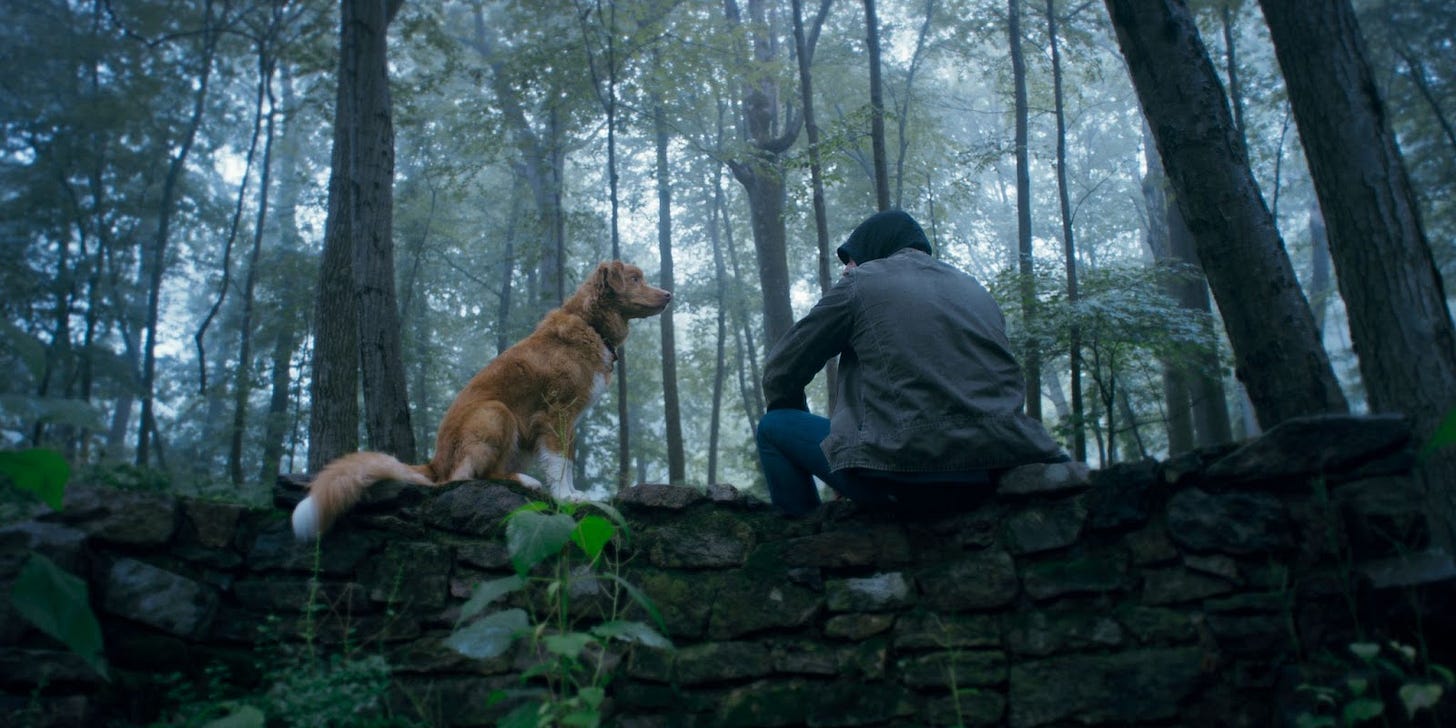
Horror films have a strange relationship with dogs. Despite their lovable, squishable little faces and tiny, big bro demeanor, dogs often serve little more than as alert systems in horror. They bark at the darkness. Growl at the basement door. Whimper at something in the air that isn’t there—a presence felt that the rest of us cannot see. When a barking dog suddenly goes silent in the spooky part of the movie? It all but confirms, yep, something evil is afoot right here.
Good Boy is a different kind of movie. The debut of writer/director Ben Leonberg, with a script co-written by Alex Cannon, this unique horror movie didn’t just include a dog… it centered the entire film around it, putting the loyal companion in the lead of this haunted house ghost story. On paper, it sounds like a gimmick. But watching it play out? It works! Bringing something different to horror by making unwavering empathy and companionship through the worst kinds of possession/sickness, kinda scary.
In Good Boy, we follow the story of Indy the dog, a Nova Scotia Duck Tolling Retriever, ever loyal to his owner, Todd (Shane Jenson), who sits with him through thick and thin. From the earliest sequences, we see that Todd is very disturbed. He’s ill, quietly battling a sort of brain or lung cancer, and his sickness leads him to some erratic behavior that borders on possession-like in quality. Todd’s sister comes to care for her brother when she can, and from what we gather, the family hosts some strangely dark secrets, though the details are deliberately thin.
The real drama belongs to Indy, who begins to sense what Todd won’t as they move into his family’s old rural home bequeathed to him by his grandfather (Larry Fessenden, of horror movie acting acclaim). Faithful to no end in being there for Todd, Indy stays with his owner, but then sees the horrors that lie in the home. Shadows slipping across hallways, doors groaning with no one there, and the faint scents of eerie smells, the kind of which make his nose twitch.
It’s a haunted house story boiled down to doggie sensations, told through the heightened awareness of a dog and some really fantastic old-school cinema techniques. What carries the movie, thus, is not “aww, cute dog” levels of emotion, but rather a genuine onscreen presence portrayed by the acting capabilities of Indy the dog, which sounds ridiculous at first, until you realize that he’s the director’s actual dog, and that the film took over 400 hours to shoot without the use of CGI. These are accomplishments that are nothing shy of impressive, which is why if you’re a fan of animals, especially dogs, you must see this movie.
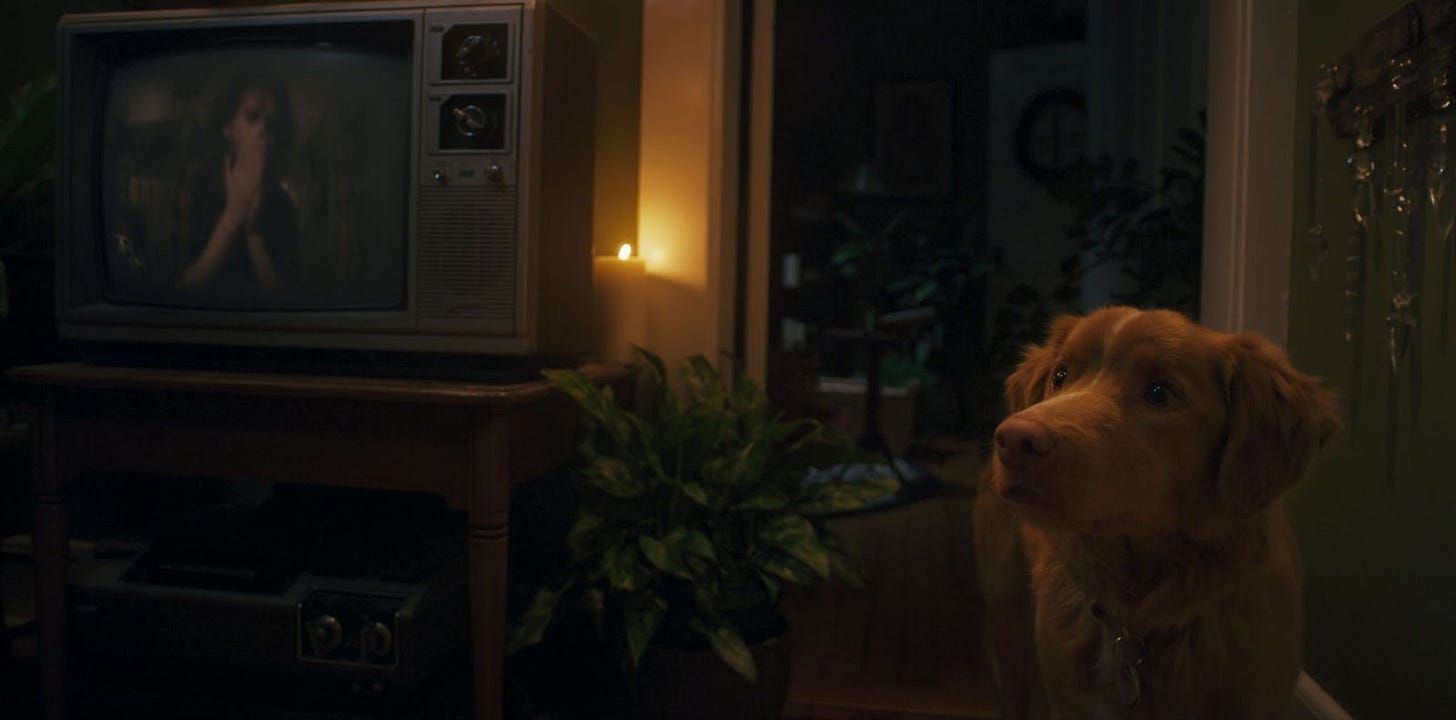
Indy’s expressions, pauses, tilts of the head, and subtle changes in body language are enough to sell entire scenes, which is weird because did I mention again, it’s a dog? I’ve watched human actors give less convincing performances in horror movies, especially in today’s market.
Now, kudos need to be acknowledged for Wade Grebnoel, who captured the movie’s perspective with a smart visual style. For instance, the faces of humans are rarely shown on camera, because why would a dog focus on them?
Instead, the camera often dips low, framing rooms from Indie’s eye level. How it plays out is in those angles loom, including monsters and the little shadows in the corner of a person’s eye (think, what if your eye floaters were a shadowy presence in the room).
Background figures slip unnoticed until you catch them, almost Mike Flanagan-esque (Hill House, Bly Manor), where half the horror comes from spotting something that’s been there all along. These shadow creatures gradually get more noticeable as the film progresses, along with some well-executed jump scares, as we see Indy go headlong into the darkness time and again.
If that weren’t enough, sound design pulls a lot of the weight of the movie as well. You can hear raindrops against the windowpane in exterior shots on the outside looking into the house, creating an outsider perspective of tension peppered throughout the film. Similarly, there’s an ambient silence that stretches the tension until it snaps all throughout the movie, contrasting the feelings of heartbeat thumping during its epic climax.
What’s brilliant is that these are intentional decisions by Leonberg, anchoring us to Indy’s senses by utilizing a mixture of tense atmosphere, precise interiors, and knowing how to utilize space in the wide. The film builds a different kind of dread, less specific about the jump scare, more about the unease of noticing too many tiny details in a way that only a dog would.
At 73 minutes, the film is short, and yes, I wanted to know more. More of Todd’s backstory. More of his sister’s. More clarity about what exactly haunts this family home. But in a way, the brevity works. It keeps the film sharp, like an experiment that knows not to overstay its welcome.
The story’s contrived, but the experience carries it along.
If you’ve ever side-eyed your dog barking at a corner of the room, or felt that chill when a pet reacts to something you can’t see, Good Boy will hit you where you live. Because deep down, we’ve all wondered if our animals are onto something we’re not.
Despite the technical enjoyment of what the film accomplished in a short time, the movie’s not really a story that stands out regarding its plotline. Which is fine because I believe some movies are meant to be experienced over thought about. Anyone who’s ever had a dog knows that they sense beyond the things we do. They bark at empty doorways. Perk their ears at noises too faint for us to hear. Sometimes they stare into the middle of the room with that fixed, unnerving focus. This movie is very much an exploration of what if they’re right? Rather than a look into just what exactly it is they’re even right about.
That’s the genius of Good Boy. It takes that small, universal fear and expands upon it through a point of view that hadn’t been explored. For once, the dog isn’t a victim, a monster, or even a metaphor. He’s the protagonist. The hero. The one who notices the threat, proactively stands his ground, and ultimately carries the story by doing his best to both investigate and, better yet, defend his owner, Todd.
Therein perhaps lies my qualm with the movie: that the dog’s loyalty to Todd is the throughline that gets us sludging through the muddy plot. In reality, nothing Todd does makes us feel that he’s worthy of Indy. Unlike Krypto in Superman, whose family is well… Superman and Supergirl, Todd is somewhat awful. Not in the outright villainous sense, but in a way that he’s pushed everyone who cares about him away, and doesn’t feel remorse so much as victim shame himself for his own inaction.
Despite this, it’s not about Todd, it’s about Indy. There are metaphors baked into this movie that never get explored, particularly when it comes to mud people or the toxins. All of this is tied to Todd’s grandfather’s story, which I won’t get into due to spoilers, but it is sort of hinting at the idea that this is somehow related to the past of his family, though it’s something more hinted at than fully unpacked.
Personally, I would have loved for Leonberg to spend another ten minutes digging into it, but the fragments are enough to give the film texture, a sense that there’s something bigger lurking under the surface. Then there’s the ending. I won’t spoil it, but I’ll say this: Indy’s journey feels noble, bittersweet, and unsettling. It’s a bit abrupt but also emotional, going in a direction we all sort of expected, though triumphs mostly out of the characterization of loyalty in its lead.
So no, Good Boy isn’t perfect, though one doesn’t need to be in today’s market. In a genre overflowing with sequels and recycled tropes, this one’s different. It’s a movie that bet that a dog could carry an entire horror movie, and somehow, it worked, which is why I hope it excels.
Christian Angeles is a writer and entertainment journalist with nearly a decade of experience covering comics, video games, and digital media. He was senior editor at The Beat during its Eisner Award–winning year and also served as managing editor of The Workprint. Outside of journalism, he writes comics and books.



